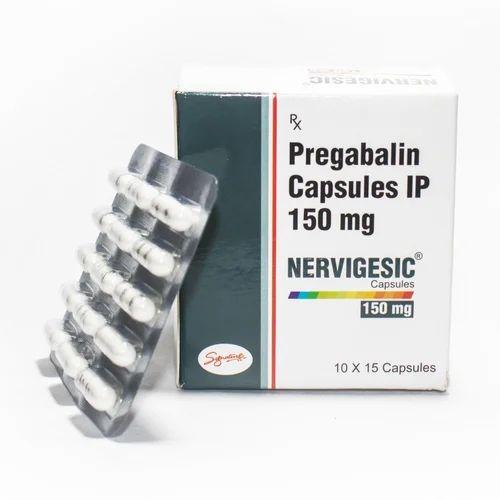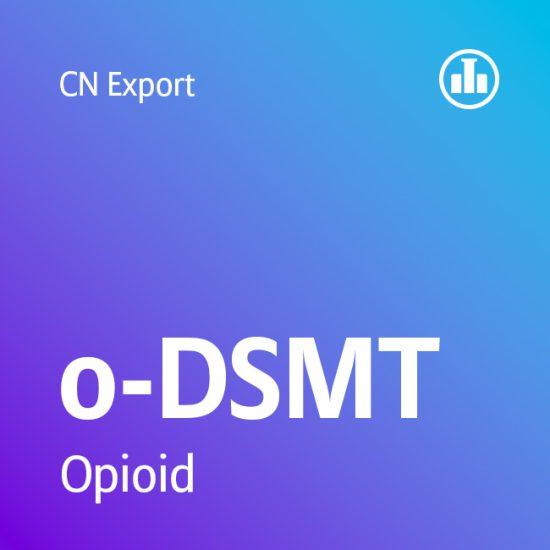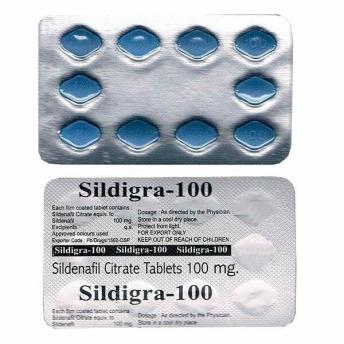Pregabalin: A Comprehensive Review
Pregabalin is a prescription medication with a host of important medical applications. It is a gabapentinoid or an analog of the neurotransmitter gamma-aminobutyric acid (GABA). Despite this, pregabalin doesn’t directly bind to GABA receptors. Instead, it binds strongly to the α2δ (alpha2delta) subunit of the voltage-gated calcium channels in the central nervous system (CNS). This medication, commercially known as Lyrica among other names, was first synthesized in the early 1990s by the pharmaceutical company Pfizer.
Pharmacology of Pregabalin
Pregabalin’s mechanism of action is quite complex. It modulates the calcium channels and reduces the release of several neurotransmitters, including glutamate, norepinephrine, substance P, and calcitonin gene-related peptide (CGRP). By altering the functioning of these neurotransmitters, it mitigates their effects on the nerve signals, leading to symptom relief in several neurological conditions.
Pregabalin’s effects on the neurotransmitter glutamate is especially important, as glutamate is the main excitatory neurotransmitter in the nervous system. Excessive amounts of glutamate can lead to overexcitation of the nerve cells, a factor contributing to conditions like epilepsy and neuropathic pain. By reducing glutamate release, pregabalin can help control these conditions.
Furthermore, pregabalin does not bind to plasma proteins, making it less likely to interact with other medications. Its bioavailability is high (greater than 90%) and does not vary with dose, meaning that it is almost completely absorbed after oral ingestion. It reaches peak blood concentration within an hour after ingestion and is eliminated from the systemic circulation primarily by renal excretion.
Clinical Uses of Pregabalin
Pregabalin has multiple uses in the field of medicine due to its capacity to modulate the nervous system. The key indications for its use include:
- Neuropathic Pain: Pregabalin is often used to manage neuropathic pain, which arises due to damage to the nervous system. Conditions that can cause this type of pain include diabetes (diabetic neuropathy), herpes zoster infection (postherpetic neuralgia), and spinal cord injury.
- Epilepsy: Pregabalin is used as an adjunctive therapy in adults with partial seizures, with or without secondary generalization. By modulating the release of glutamate, it helps control seizures in these patients.
- Fibromyalgia: It is also effective in treating fibromyalgia, a condition characterized by chronic widespread pain and heightened pain response to pressure.
- Generalized Anxiety Disorder (GAD): In the European Union, pregabalin is approved for the treatment of generalized anxiety disorder. Its calming effect on the nervous system helps reduce the symptoms of this condition.
Dosage and Administration
The dosage of pregabalin varies depending on the condition it’s being used to treat, the patient’s renal function, and their response to treatment.
For neuropathic pain associated with diabetic peripheral neuropathy, the initial dose is typically 50 mg three times a day (150 mg/day), which can be increased to a maximum dose of 300 mg/day within 1 week based on efficacy and tolerability.
For postherpetic neuralgia, the recommended starting dose is 75 mg two times a day or 50 mg three times a day (150 mg/day). Based on individual patient response and tolerability, the dose may be increased to a maximum dose of 300 mg/day.
In epilepsy, the starting dose is usually 75 mg two times a day or 50 mg three times a day, which may be increased to 150 mg two times a day or 100 mg three times a day within 1 week based on efficacy and tolerability.
In treating fibromyalgia, the typical starting dose is 75 mg two times a day, which can be increased to a target dose of 300-450 mg/day. For treating generalized anxiety disorder, the dose can range from 150 to 600 mg per day.
Pregabalin is usually taken with or without food. In the case of missed doses, it should be taken as soon as possible unless it is closer to the time of the next dose. In that case, the missed dose should be skipped, and the regular schedule should be continued.
Side Effects and Precautions
Like all medications, pregabalin can have side effects. These include dizziness, drowsiness, confusion, difficulty with concentration, blurred vision, weight gain, and swelling of hands and feet. More serious side effects include muscle pain, weakness, tenderness, and changes in mood or behavior (such as feelings of anxiety or restlessness).
Patients with a history of substance abuse may have a higher risk of misuse and dependence when using pregabalin. In patients with existing kidney issues, the dose may need to be adjusted, and it should be used with caution.
Abrupt discontinuation of pregabalin should be avoided as it can lead to withdrawal symptoms such as insomnia, nausea, headache, and diarrhea. A gradual dose reduction over a minimum of 1 week is recommended.
Conclusion
Pregabalin is a powerful and versatile medication, with applications in managing several neurological conditions. Understanding its pharmacology, indications, dosing, and potential side effects can help optimize its use in clinical practice. Like all medications, pregabalin should only be used under the direction and supervision of a healthcare professional. It’s crucial to have open and honest discussions with healthcare providers about its use and any potential issues or concerns.
Pregabalin is a medication used to treat several neurological conditions, including seizures, anxiety disorders, and neuropathic pain. It belongs to the class of drugs known as anticonvulsants, which work by decreasing the abnormal activity in the brain.
Pregabalin is available in capsule form and is taken orally. It is absorbed quickly into the bloodstream and has a bioavailability of approximately 90%. The medication reaches peak plasma concentrations within 1 to 2 hours after administration.
The recommended dose of pregabalin varies depending on the condition being treated. For seizures, the starting dose is typically 75mg twice daily, which can be increased up to 600mg per day as needed. For anxiety disorders, the starting dose is usually 150mg per day, which can be increased to 600mg per day as needed. For neuropathic pain, the starting dose is usually 150mg per day, which can be increased up to 600mg per day as needed.
Pregabalin works by binding to a specific type of calcium channel in the central nervous system. This binding reduces the release of certain neurotransmitters, including glutamate and substance P, which are involved in pain and anxiety. By reducing the release of these neurotransmitters, pregabalin can help to reduce the symptoms of seizures, anxiety, and neuropathic pain.
The use of pregabalin is associated with several potential side effects, including dizziness, somnolence, peripheral edema, and dry mouth. More serious side effects, such as suicidal thoughts, allergic reactions, and angioedema, have also been reported. Pregabalin should not be used in patients with a history of hypersensitivity to the medication or any of its components.
Pregabalin has a relatively low potential for abuse and dependence compared to other medications used to treat anxiety and pain. However, it should still be used with caution in patients with a history of substance abuse or dependence.
In conclusion, pregabalin is a medication with a proven track record in the treatment of seizures, anxiety disorders, and neuropathic pain. Its mechanism of action, which involves reducing the release of certain neurotransmitters, has been well-studied and understood. While it has the potential for side effects, it is generally well-tolerated and has a low potential for abuse and dependence. As with any medication, pregabalin should be used under the guidance of a healthcare professional.
🇪🇺 Pregabalin Legal Status in Europe (2025 Overview)
Pregabalin is a GABA analogue prescribed for:
- Neuropathic pain
- Generalized anxiety disorder
- Epilepsy
- Fibromyalgia (off-label in some countries)
Marketed under names like Lyrica, Alzain, or Rewisca, Pregabalin is structurally similar to Gabapentin, but it has stronger psychoactive effects, faster onset, and higher abuse potential.
Due to rising misuse (especially in combination with opioids or benzos), many European countries have reclassified Pregabalin as a controlled substance, and most of the rest are actively monitoring it.
🔒 Controlled Substance – Requires Special Prescription
Pregabalin is a controlled drug in a growing number of countries due to:
- Sedative and euphoric effects at high doses
- Widespread diversion and recreational use
- Serious overdose risks when combined with CNS depressants
Countries where Pregabalin is officially controlled (2025):
| Country | Control Status |
|---|---|
| 🇬🇧 United Kingdom | Class C / Schedule 3 since 2019. Secure prescription, no repeat dispensing. |
| 🇮🇪 Ireland | Controlled since 2020 under Misuse of Drugs Regulations. Secure prescription required. |
| 🇳🇴 Norway | Fully controlled. Requires special prescription. |
| 🇨🇭 Switzerland | Controlled under narcotics law. Dispensing restrictions apply. |
| 🇫🇮 Finland | Reclassified as a controlled psychotropic in 2023. Strict prescribing and monitoring. |
| 🇸🇰 Slovakia | Controlled under national psychotropic list. |
| 🇸🇮 Slovenia | Recently controlled due to increasing misuse cases. |
| 🇨🇾 Cyprus | Controlled since 2022. |
| 🇭🇺 Hungary | Controlled; limited prescription duration and doses. |
| 🇵🇱 Poland | Controlled as of 2024. Electronic prescription monitoring in place. |
✅ Prescription-Only (Not Controlled Yet, But Monitored)
These countries do not officially classify Pregabalin as a narcotic or psychotropic, but they apply tight restrictions and abuse monitoring:
- 🇫🇷 France – Prescription-only; under enhanced surveillance by ANSM
- 🇩🇪 Germany – Prescription drug; not scheduled, but pharmacies report high misuse concerns
- 🇮🇹 Italy – Prescription-only; pending re-evaluation by AIFA
- 🇧🇪 Belgium – Not officially controlled, but flagged for potential abuse
- 🇪🇸 Spain – Prescription-only; under close pharmacovigilance
- 🇳🇱 Netherlands – Prescription-only; not on Opium Act lists yet
- 🇩🇰 Denmark – Monitored; prescription required
- 🇸🇪 Sweden – Prescription-only; abuse cases increasing
- 🇵🇹 Portugal – Prescription-only, but restrictions apply for long-term use
- 🇦🇹 Austria – Prescription-only, under pharmacovigilance
- 🇱🇹 Lithuania – Prescription-only, monitored
- 🇪🇪 Estonia – Same as above
⚠️ Import, Possession, and Travel Rules
- Possessing Pregabalin without prescription is illegal in all European countries, even if it’s not scheduled.
- Importation is generally banned unless pre-approved (e.g., via medical license or documentation).
- In Schengen countries, Pregabalin requires a Schengen Certificate for Controlled Substances if traveling to a country where it’s classified as a narcotic.
📝 Certificate guide:
https://www.schengenvisainfo.com/schengen-certificate/
🧠 Comparison with Gabapentin
| Feature | Pregabalin | Gabapentin |
|---|---|---|
| Potency | Higher | Lower |
| Onset | Faster (30–60 min) | Slower (60–120 min) |
| Control Status | Controlled in 10+ countries | Controlled in ~6 countries |
| Abuse Potential | Higher | Moderate |
| Legal Trend | More restrictions added yearly | Slowly rising control |










Kratonis (verified owner) –
product generally is okay, sadly not the same as on the image, but inside the capsules its about 300mg, a little less but thats alright! No Box as well! 4/5 stars
rechem –
Thank you for sharing your experience with the Pregabalin 300 EU product. The capsules are produced by big Pharmaceutical industry and they contain 300mg. The image shows a generic product, it’s good to know that it still meets your expectations.
As with any medication, it’s important to note that individual experiences may vary. It’s possible that the absence of a box could be due to the packaging or shipping process. However, if you have any concerns or questions about the product, I would recommend reaching out to the seller or a healthcare professional for further clarification.
Thank you again for sharing your feedback, and I hope that the Pregabalin continues to provide you with the relief you need for your nerve pain.
A. (verified owner) –
Fast shipping
Real product
Kind seller
5/5 👍
hoiza420 (verified owner) –
Super fast shipping (3 days)
Product is exactly what I expected.
Thank you and your Team for the great service.
As always 5/5.